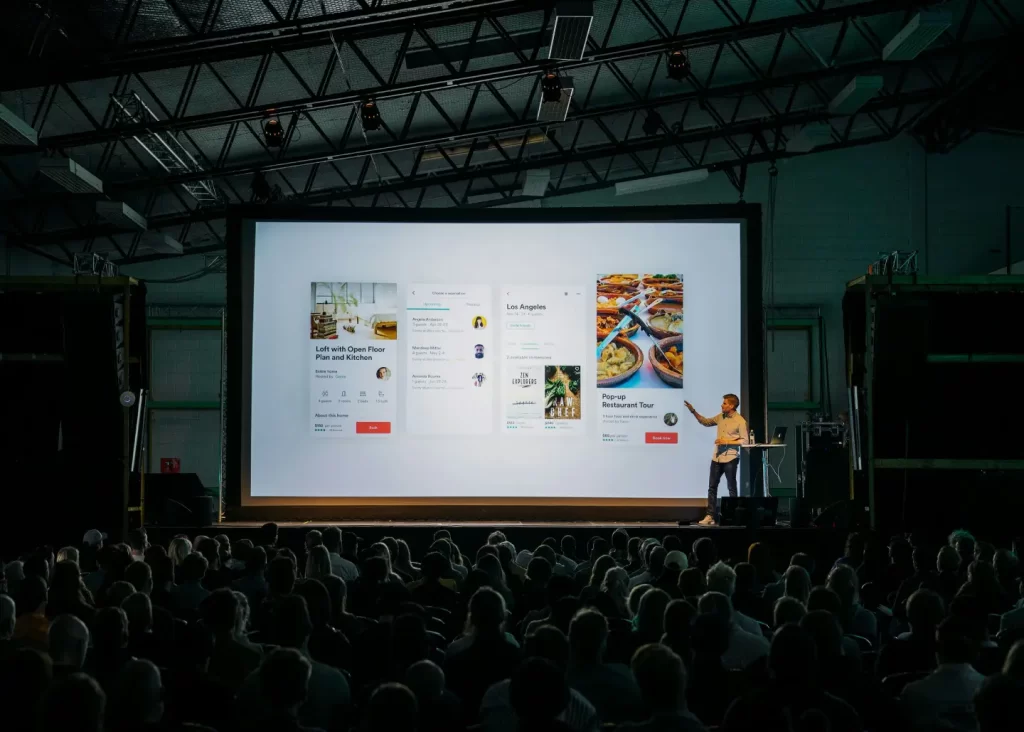
06 Mar Website Design for Conversion: Strategies to Encourage Desired Actions
In the fast-paced world of online businesses, the ability to convert website visitors into customers, subscribers, or users is crucial for sustained success. This article explores effective strategies for designing websites that encourage desired actions, such as purchases, sign-ups, and downloads.
Acknowledging the paramount importance of converting website visitors into active participants, this article navigates the dynamic realm of online businesses, where success hinges on the ability to seamlessly transition visitors into customers, subscribers, or users. In an era marked by rapid digital transformations, understanding the intricate interplay between user experience and conversion becomes the linchpin for sustained success in the online landscape. From strategic design elements to user-centric approaches, we delve into effective strategies that empower businesses to craft websites capable of not only capturing attention but also compelling visitors to take the desired actions that drive growth and longevity. Join us on this exploration of the art and science behind designing websites that go beyond aesthetics, creating a digital ecosystem that fuels the engine of online success.
Introduction
Conversion, in the digital landscape, refers to the desired actions users take on a website. These actions vary from making purchases and signing up for newsletters to downloading resources. The effectiveness of a website’s design directly impacts conversion rates. A well-crafted design can guide users seamlessly through the conversion funnel, enhancing the overall user experience and boosting business outcomes.
The virtual stage became a lifeline for both artists and fans in the performing arts since physical meetings faced before unheard-of restrictions. This change sparked an industry-wide digital revolution and called for creative methods of delivering performances. Our exploration extends beyond the sheer survival of the performing arts to delve into how this sector has ingeniously leveraged digital platforms, demonstrating an inspiring resilience that transcends physical boundaries. The evolution of virtual performances, live-streamed events, and interactive digital experiences has not only sustained artistic expression but has also broadened access, fostering a global audience eager to engage with the arts in new and immersive ways.
Understanding Your Audience
Before diving into the design process, understanding your audience is paramount. Conduct thorough audience research to identify demographics, needs, pain points, and online behavior. Creating detailed buyer personas based on this information allows for a more personalized and targeted website design that resonates with users, increasing the likelihood of conversions.
A well-informed understanding of your audience serves as the cornerstone for optimizing the conversion journey. By aligning your website design with the preferences and expectations of your target demographic, you create an environment that not only captures attention but also cultivates a sense of connection. Incorporating elements that address specific pain points and cater to the unique needs of your audience fosters a user-centric design, fostering trust and engagement.
Building a Conversion-Centric Design
Clarity and Focus
The first step in a conversion-centric design is to ensure clarity and focus. Clearly communicate your unique selling point, prioritizing hierarchy and visual elements to guide users toward desired actions. Minimize distractions and clutter to prevent cognitive overload, enhancing user understanding and engagement.
In the pursuit of a conversion-centric design, clarity and focus stand as the foundational pillars for cultivating a seamless user journey. The initial step involves a meticulous approach to communication, where the unique selling point takes center stage. Prioritize hierarchy and visual elements strategically to steer users towards the desired actions, ensuring that key messages are conveyed with precision and impact. By minimizing distractions and decluttering the interface, cognitive overload is mitigated, providing users with a streamlined and immersive experience. This commitment to clarity not only fosters user understanding but also enhances engagement, laying the groundwork for a website that not only captivates but efficiently converts visitors into active participants in the digital landscape.
Navigation and Usability
Designing an intuitive and user-friendly interface is crucial for conversion. Prioritize mobile responsiveness, simplify access to important information, and ensure seamless navigation. An easy-to-use website reduces friction, encouraging users to take the desired actions effortlessly.
It is impossible to overestimate the importance of creating an intuitive and user-friendly interface in the quest for conversion excellence. The diversity of the digital ecosystem necessitates giving mobile responsiveness top priority to smoothly serve users across several platforms. By simplifying access to critical information and ensuring a smooth navigation experience, a website can transcend the constraints of a platform or device, providing users with a consistent and accessible journey. The reduction of friction through an easy-to-use interface becomes instrumental in encouraging users to effortlessly take desired actions, fostering a harmonious interaction that propels them towards conversion with confidence and ease. In this dynamic digital age, where user experience reigns supreme, the commitment to a responsive and user-centric design is pivotal for unlocking the full potential of conversion optimization.
Visuals and Content
Engaging visuals aligned with your brand and compelling, concise copy are essential. Craft a narrative that directly speaks to user needs, utilizing storytelling and social proof to build trust and credibility. A visually appealing and information-rich website can significantly influence conversion rates.
Elevating the user experience to new heights involves the strategic fusion of engaging visuals and compelling copy, both seamlessly aligned with your brand identity. The art of conversion unfolds as you craft a narrative that not only resonates with users but directly addresses their needs, employing the persuasive tools of storytelling and social proof to build trust and credibility. By weaving a cohesive story through captivating visuals and concise copy, your website becomes a powerful medium that not only captures attention but also guides users towards conversion with authenticity and impact. In this symbiotic dance between aesthetics and information, the fusion of a visually appealing and content-rich website emerges as a potent catalyst, significantly influencing conversion rates and fostering a lasting connection between your brand and its audience.
Optimizing for Action
Calls to Action (CTAs)
Designing clear, actionable, and visually prominent CTAs is key. Experiment with different styles and placements to find the most effective combination. Subtly incorporate urgency and scarcity tactics to prompt immediate user action.
In the dynamic landscape of conversion optimization, Calls to Action (CTAs) emerge as the linchpin for guiding user interactions toward desired outcomes. Beyond their visual appeal, the effectiveness of CTAs hinges on a nuanced understanding of user behavior. Implementing A/B testing with diverse styles and placements allows for data-driven insights, helping identify the most resonant combination for your specific audience.
Friction Reduction
Streamlining forms and checkout processes minimizes user effort and reduces abandonment rates. Offering multiple payment options enhances user convenience. Building confidence through security assurances and testimonials further reduces friction, fostering a positive user experience.
As users navigate the online landscape, the streamlined efficiency of forms and checkout processes becomes a critical factor influencing conversion rates. Simplifying form fields and ensuring a hassle-free checkout process minimizes friction, preventing users from abandoning their journey due to unnecessary complexities. Moreover, providing a spectrum of payment options acknowledges the diverse preferences of your audience, catering to a broader range of users and enhancing overall convenience.
Beyond the transactional aspect, instilling confidence in users is pivotal. Security assurances, such as SSL certificates and trust badges, communicate a commitment to protecting user data, assuaging concerns and reducing apprehension. Incorporating testimonials and success stories within the website reinforces credibility, addressing potential doubts and further smoothing the path to conversion. Together, these strategies form a comprehensive approach to friction reduction, cultivating a positive user experience that fortifies the foundation for successful conversions.
Testing and Iteration
Continuous improvement is crucial in the dynamic online environment. Implement A/B testing and data analysis to optimize website design for conversion. Track various metrics and use data-driven insights to inform iterative changes, ensuring the website evolves in line with user preferences and behaviors.
In the ever-evolving digital landscape, the journey toward optimal conversion rates involves a commitment to continuous improvement. A/B testing emerges as a powerful tool, allowing you to experiment with different design elements, layouts, and content variations to discern what resonates most with your audience. By closely analyzing the data generated through these tests, you gain invaluable insights into user preferences and behaviors, informing strategic iterations that keep your website aligned with the dynamic expectations of your audience.
Metrics such as click-through rates, bounce rates, and conversion rates serve as key indicators, providing a comprehensive understanding of user interactions. Regularly monitoring and interpreting these metrics enables you to identify areas for enhancement and refine your website design accordingly. This iterative process ensures that your website evolves organically, staying attuned to the ever-changing landscape of user preferences and technological advancements. Through a dedication to testing and iteration, your website becomes a dynamic and responsive platform, continually optimizing the user experience and driving sustained success in the realm of online conversions.
Conclusion
In conclusion, designing for conversion requires a holistic approach that considers audience understanding, user-centric design principles, and ongoing optimization efforts. By incorporating the outlined strategies, businesses can create websites that not only attract visitors but also convert them into valuable customers or subscribers. Continuous experimentation and improvement based on data insights are vital for long-term success.
Key Takeaways
Strategy | Importance |
Clarity and Focus | Communicate unique selling points and guide user actions |
| Navigation and Usability | Create an intuitive, mobile-responsive, user-friendly interface |
| Visuals and Content | Use engaging visuals, compelling copy, and storytelling for credibility |
| Calls to Action (CTAs) | Design clear, actionable, and visually prominent CTAs |
| Friction Reduction | Streamline processes, offer multiple payment options, and build confidence |
| Testing and Iteration | A/B testing and continuous iteration based on data-driven insights |
Frequently Asked Questions
Why is audience understanding crucial in website design for conversion?
Understanding your audience allows for a more personalized and targeted website design, resonating with users and increasing the likelihood of conversions.
How can urgency and scarcity tactics be incorporated into CTAs?
Urgency and scarcity can be subtly included in CTAs through language that emphasizes limited-time offers or dwindling availability, encouraging immediate user action.
What metrics should be tracked in A/B testing for website optimization?
Metrics such as conversion rates, click-through rates, bounce rates, and time on page are essential for evaluating the effectiveness of design changes and guiding further iterations.





